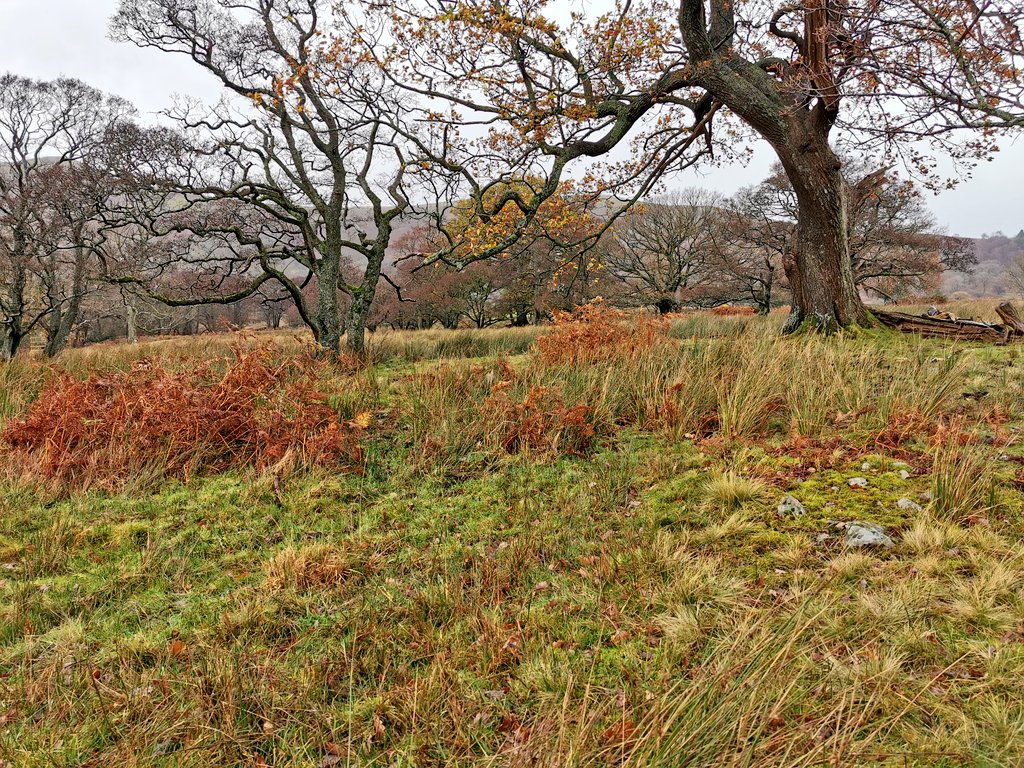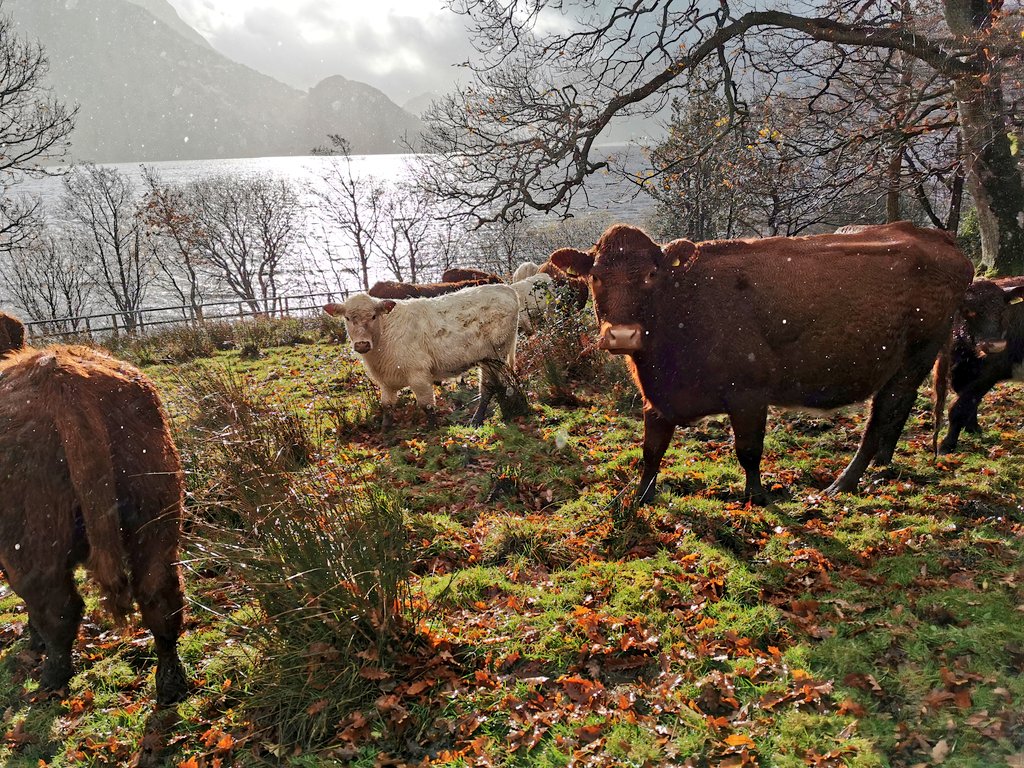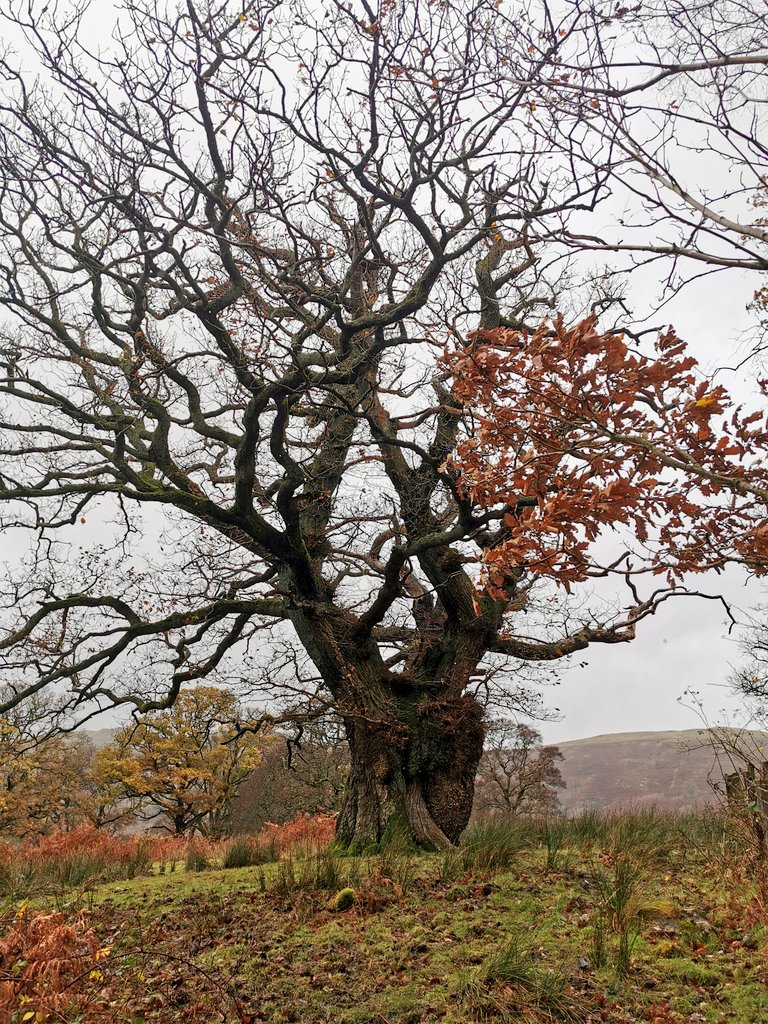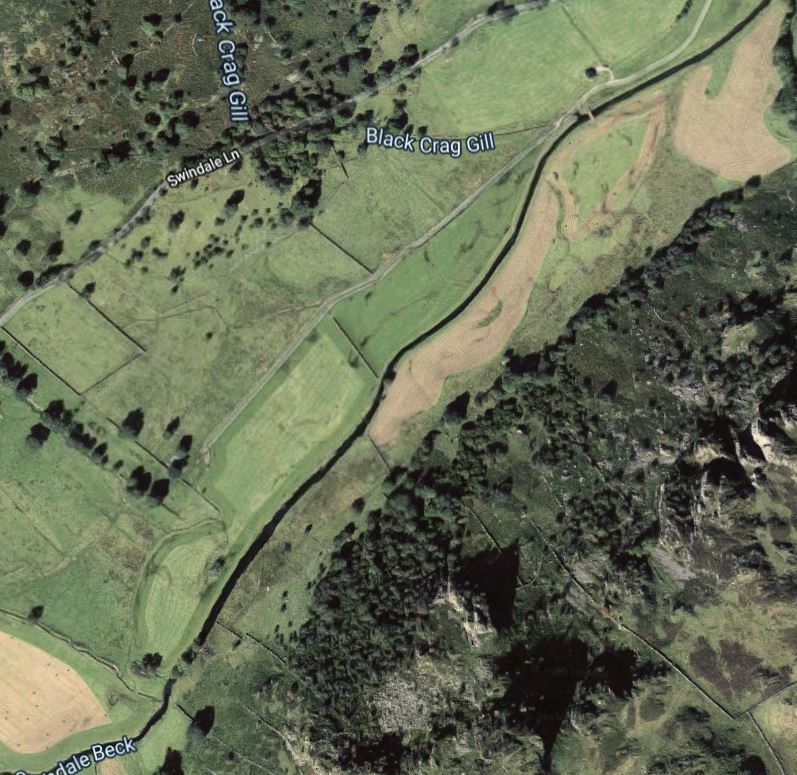
Today I decided to return to Young Wood, one of the @lakedistrictnpa's most fascinating ecological fragments. It doesn't look like much from the road outside our house, 3 miles away across the valley, just a fuzz of green on the side of Bowscale Fell. 

There was lots of good stuff on the way. First, I walked through @cumbriawildlife's Eycott Hill nature reserve. The planted juniper scrub and broadleaf trees are thriving, escaping their guards in places. A young wood, in sight of Young Wood. 





A tiny bit of trespassing allowed me to hop from the Eycott Hill Access Land 'island' to another one containing White Moss, a lovely raised mire. It was good seeing birch growing where a conifer plantation was removed at the bog edge. 

White Moss is wonderfully wet and wild, and so as usual, I had the place to my myself. The colours of a bog in Autumn are spectacular. 







Whilst picking cranberries to munch on, I spotted some bog rosemary, Andromeda polifolia, one of my favourite bog plants. Bog plants like these are the only ones that should be growing in peat. 







The woods at the edge of the bog, mainly birch and willow, are a real tangle in places. I kept thinking I might bump into Yoda. 







Leaving the White Moss behind, I headed through Mungrisdale and then followed the River Glenderamackin for a bit, as it wound down from the fells. Young Wood was coming into focus on the ridge above me. Just a short slog up the hill to reach it now. 

The slope up to Young Wood is a typical altitudinal succession but in reverse. The base of the valley is mostly grassy, due to the sheep grazing. As I started to climb, heather appeared, also grazed, so short.
Inside the exclosure around Young Wood, built in 2008 to protect it from grazing, the heather is longer. Higher still and gorse appears, interspersed with the heather. The gorse gets more abundant the higher you go, almost as if it's defending the wood above. Not easy going. 



Finally, well scratched, I reached the edge of Young Wood. To be fair, it's nearly all edge. At about 460m asl, this is the highest oak woodland in England. It's a very strange sensation to have to walk up to reach a woodland, rather than down, as is the norm. 

It's tiny, less than 2ha in area, a thin strip of weather-beaten oaks running for about half a mile, just below the windswept ridge. It doesn't feature on any map, ancient or modern, but despite its name, it's obviously been here a good long while. 

Under the shelter of the stunted oaks, you can feel its age. The tallest is little more than 4m high, most are much less. To cope with the wind and exposure, most have opted to grow low and wide. It's a surreal experience to look out over the top of the wood's canopy. 





The trees are fantastically twisted, mossy and thick with lichens in places. It's hard to say how old these survivors are, but in the thin, rocky soil, and in the harsh climate, they are likely much older than their small size would suggest. 







My reason to visit today was to see if there were any acorns, for despite grazing having been excluded by a fence, there is very little oak regeneration taking place. Lots of rowan and some juniper is appearing through the heather, but very little oak. 



Without regeneration, Young Wood will eventually vanish. Oak trees often rely on jays and squirrels, who bury acorns to cache for later. Those that are forgotten get the chance to grow into new trees.
Because Young Wood is so small and so far from other woods, few jays or squirrels visit, so regeneration is limited. Because it's been such a dry year, there were very few acorns, but I found some eventually. 

Working with @NECumbria we'll grow the acorns I collected into trees in the @WildHaweswater nursery, and then plant them back out to help the wood to expand. By standing in for the jays and squirrels, we can help the wood attain the size needed to attract and sustain them again. 

This fragile forest fragment hints at what much more of the fells looked like, a long long time ago. The other side of the valley, viewed through, or over, the leafy canopy stood out in sharp contrast. 



If you want to learn more about Young Wood, there's an interesting paper about it here researchgate.net/publication/27…. Jim Crumley also wrote about it in his latest book saraband.net/sb-title/lakel…
Well that proved of more interest than I expected! If you like this sort of thing, then perhaps you might like to pre-order my book, out in Feb next year penguin.co.uk/books/144/1442…
• • •
Missing some Tweet in this thread? You can try to
force a refresh







